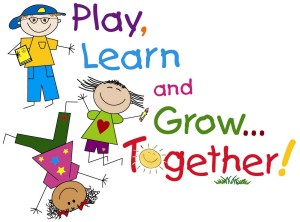The NAEYC published a list of phrases to encourage children, alternatives to “good job”.
Use sentence starters. Say “I see you,” “I hear you,” or “I notice,” followed by a description. “I noticed you sorted the leaves into two piles. These ones are from an oak tree and those ones are from a maple tree.” Or try openers like “Tell me more about” or “You worked really hard to.”
Notice and give feedback about efforts. “Jocelyn, you spent a long time figuring out where to put the last two pieces of the puzzle. You kept working until you were done!”
Invite children to talk. Children’s learning is enhanced when they talk about their explorations and creations. “That looks really interesting. How did you do that?” “You wrote a lot of words on your paper. Would you tell me what they say?”
Pay attention to details. When talking about a painting, tell the artist what shapes, lines, colors, textures, and forms you see in the work. “Look at all of the green polka dots in the sky! You mixed many shades of green and blue to paint this picture.”
Say “thank you.” When children are helpful, thank them. “Thank you for opening the door for me. While you held the door, I could use both hands to carry our bag of balls into the classroom.”
Identify a goal before responding. Ask yourself: Do I want to acknowledge a positive behavior, an act of kindness, or use of problem-solving skills? To encourage self-regulation you might say, “How kind you are. You helped Jorge zip his coat, even though you wanted to run and play.”
Give nonverbal feedback. A gentle pat on the back, a smile, a wink, or a fist bump tells a child, “I see you are learning.” This is especially appropriate for children who are dual language learners.
Use mirroring. When a child goes up and down the slide on her own for the first time, notice her smile, then smile back with a specific comment. “Look at what you did! Just yesterday you asked me to help and now you can do it on your own.”
Highlight children’s work. Invite children to help find a place to hang a painting. Plan a time when children can share their work with classmates. Include photos that demonstrate children’s efforts and accomplishments in a blog or a family newsletter. “Petra and Janine, please help me choose some photos for our weekly update. I’d like all the families to see how you worked together to make a book about our trip to the nature center.”
Encourage next steps. After a child has one positive experience, suggest something that he or she can do that leads to another accomplishment. “The boat you drew has two masts and lots of portholes. What materials could you use to build it?” (Note the introduction of a new vocabulary word—portholes!) TYC
Source: NAEYC website
